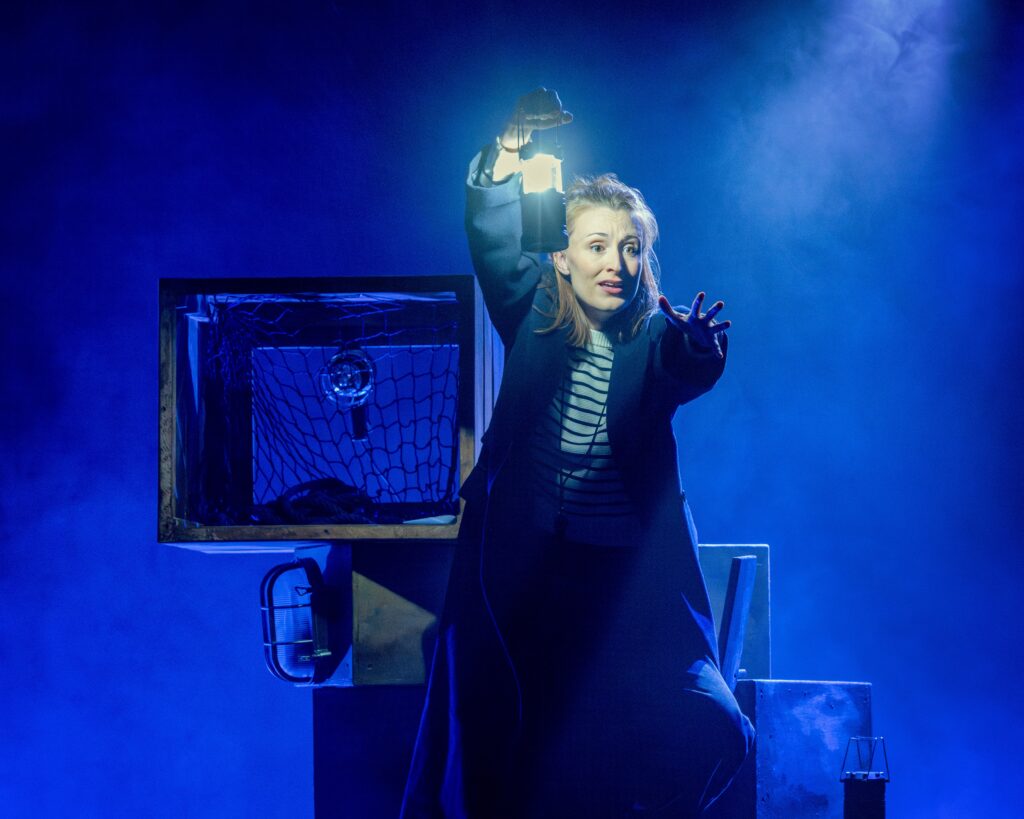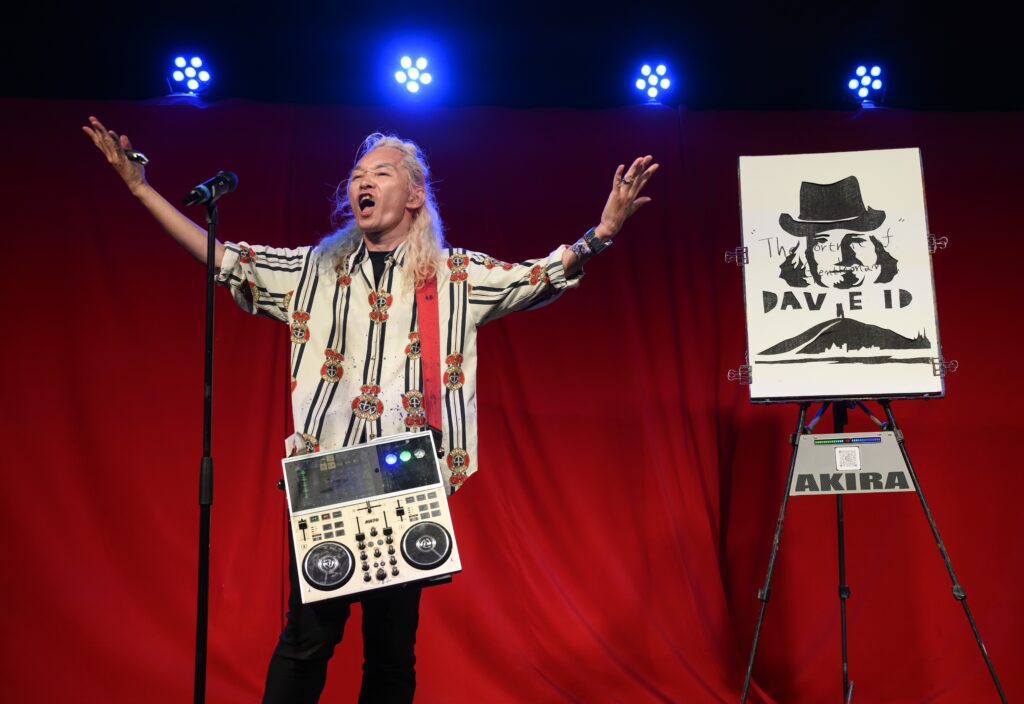
Structured around the impressively orchestrated metaphor of losing a sailor overboard, The Light House sees Alys Williams recount her lived experience of loving someone who is struggling to find the light in a time of intense internal darkness. As it turns out, the steps taken to save a person from drowning at sea are almost directly applicable to supporting someone who no longer wishes to stay afloat on land.
Step 1: shout
Step 2: alert
Step 3: throw out a floatation device
Step 4: point
Immediately, Alys creates a sincerely safe space among those present – this being what allows her to connect with all and even have a few join her onstage.
Now, audience participation in a non-immersive environment where members of the public may or may not anticipate creative involvement is always a risk. In this instance though, it was not only a risk worth taking, but one that I believe to be entirely necessary to the beauty of the play. Much like how finding happiness in life is so often about looking for the little moments – the absolute joy in this piece came from those small interactions.
My personal favourite was when Alys invited a woman sat in the front row to share a dance with her. The unadulterated, playful kindness we all witnessed in that moment is one that will definitely stick with me as both an extraordinary example of participatory theatre, and just how extraordinary such ordinary things are.

Ed Heaton, Emma Williams, and Matthew Carnazza form a perfect triangle of complementary choices in their respective designs. With just enough detailing to lift the blank black canvas of the Park Theatre studio into a space that transcends specific location and allows Alys to seamlessly transition from scene to scene, often without even moving or removing anything at all.
The character of Alys’s partner Nathan is, for the most part, portrayed via a desk lamp that is animated through puppeteering on Alys’s part, and expertly timed operation of the bulb. This personification of a (very aptly chosen) object is just one example of the innovative use of practical light being used symbolically to display the multitude of ways to insight flickers of hope in any circumstance.
The story of Nathan’s battle with depression is told with compassion and anchored in hope, meaning that – despite the subject matter – every aspect of this text revolves around a positive narrative.
Ultimately, this is a tale of love rather than loss, shining a beautiful light on the capacity of the human heart even (and perhaps especially) when the mind is shrouded in darkness.















